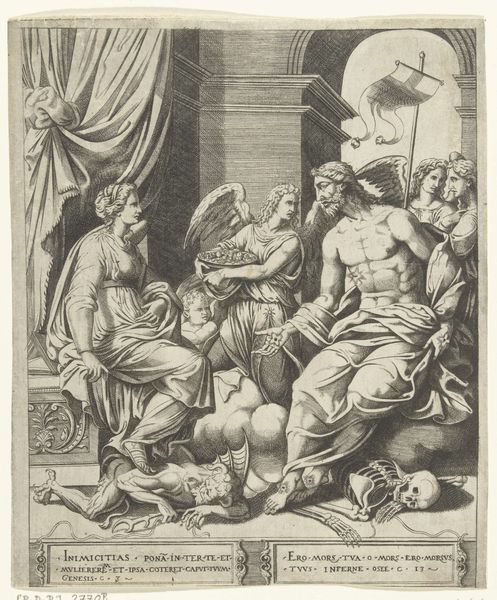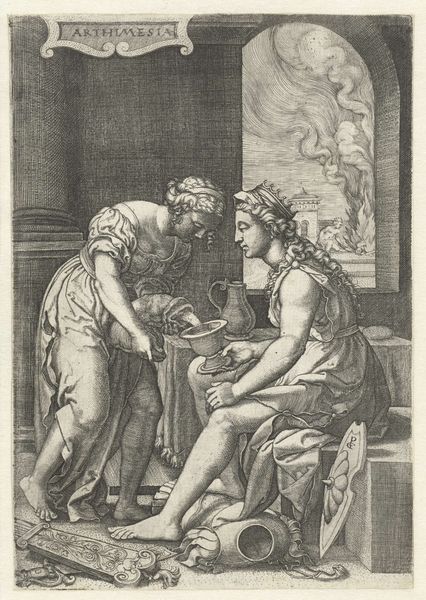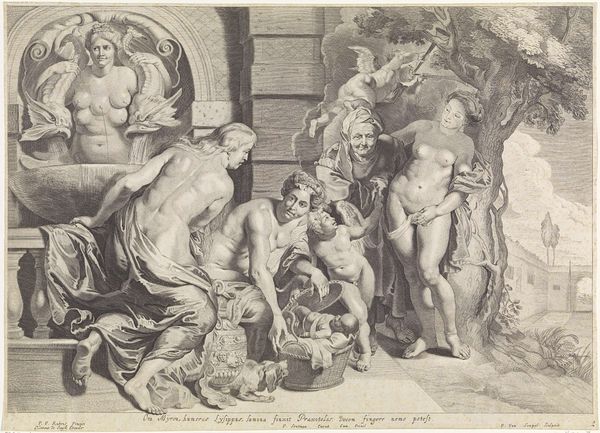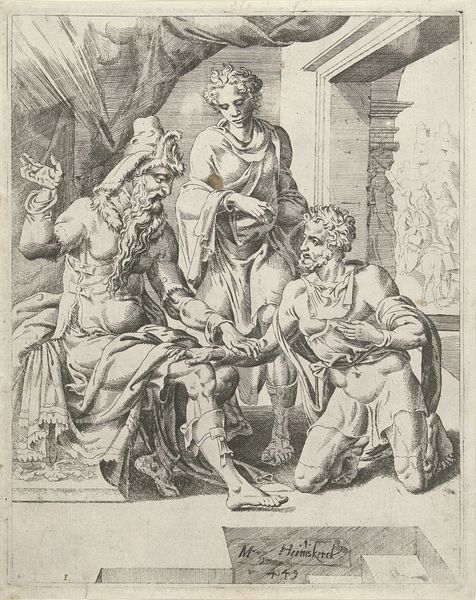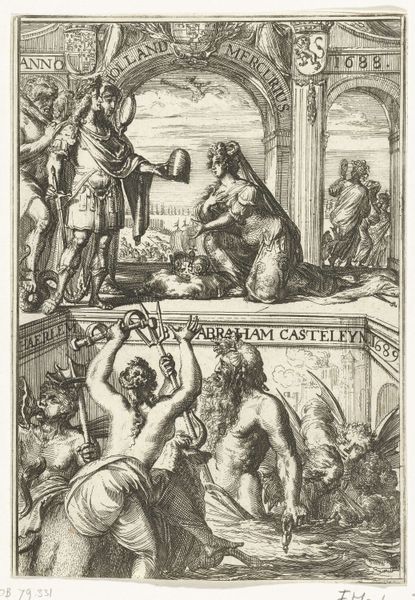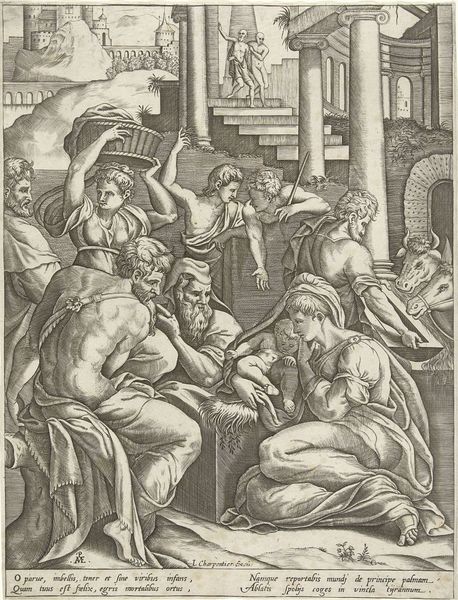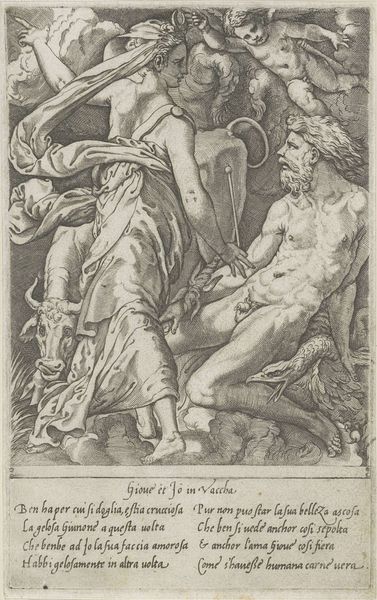
drawing, print, engraving
#
portrait
#
drawing
#
ink drawing
#
narrative-art
# print
#
figuration
#
11_renaissance
#
line
#
history-painting
#
northern-renaissance
#
engraving
Dimensions: height 250 mm, width 196 mm
Copyright: Rijks Museum: Open Domain
Curator: It's interesting how stark and…well, disturbing it feels at first glance, right? It's called "Lot and his Daughters," made in 1551 by Dirck Volckertsz Coornhert, here in the Rijksmuseum. The medium is engraving, a really linear, stark medium, as you can see. Editor: Disturbing is putting it mildly. Talk about family drama… even without knowing the biblical tale, the tension and discomfort radiating off of these figures is palpable. Is that wine? What are we looking at here, symbolically? Curator: Exactly! It depicts the aftermath of the destruction of Sodom. Lot and his daughters are shown seeking refuge in a cave, with the daughters eventually getting their father drunk in order to continue their lineage. The act of pouring is very prominent, isn’t it? Note the daughter pouring wine–or perhaps some other strong intoxicant. What do you make of that cup she is using, though? Editor: The composition is undeniably strong. I keep going back to the setting… It's a pretty literal interpretation of a "cave." Visually claustrophobic. Symbolically? Represents being trapped? Confined, maybe, both physically and morally. Curator: The cave absolutely speaks to confinement, both physical and moral. The whole scene feels burdened with fate. Think about it: The line work in the engraving adds to the weighty, almost oppressive atmosphere. Every etched line feels deliberate. It is difficult not to reflect on how deeply the cultural narratives are passed. I believe the vessels they hold–both pitcher and drinking cup–become vehicles through which the sins of the past echo into the present and threaten to define the future. Editor: So much for divine intervention being all sunshine and rainbows! Visually, though, the lack of subtlety… there's a rawness to it. You’re left with these exposed, raw, almost unsettling, bodies. Not the "ideal" bodies, are they? It gives this engraving an almost documentary feel, as though they may have sat and had someone record it exactly as it all was. And what of the lack of shading overall? Very little is hidden here… very little mystery. Curator: In that time, Northern Renaissance prints favored a certain directness. More graphic clarity, so to speak. But let’s pause before ascribing intentions too hastily! This stark clarity lends itself to very interesting symbolic work around human fallibility. After all, even in fleeing destruction, they cannot escape, can they? Their "cave" is as much within themselves. I find that such a message resonates even today, don’t you? Editor: Absolutely. The layers in this aren’t immediately obvious, but peel them back and it hits hard. I might need a glass of wine after this.
Comments
No comments
Be the first to comment and join the conversation on the ultimate creative platform.

